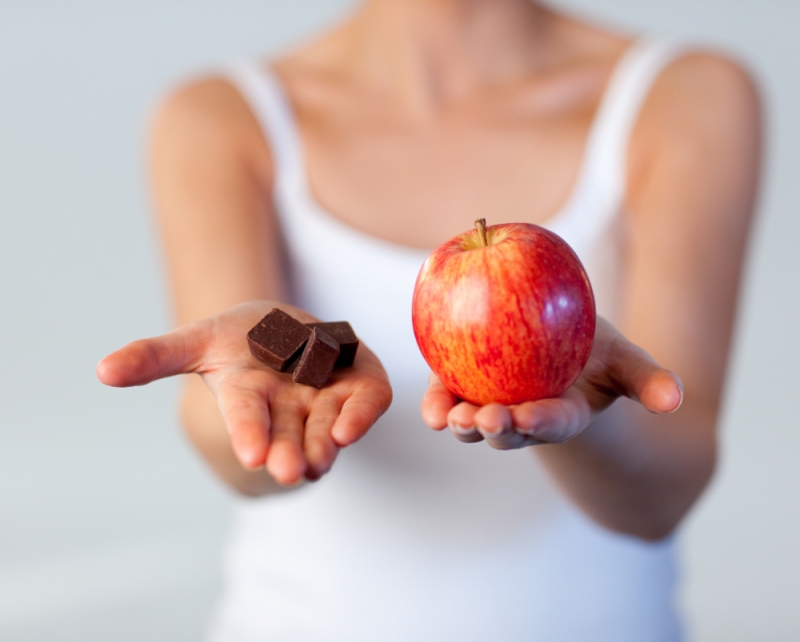Superfood Confusion
/The health industry sure does love the term "Superfood" doesn't it?
The Superfood phenomenon has brought us such nutrition heroes as chia seeds, kale and goji berries. While all three of those foods are wonderful and incorporating new nutrient dense foods into your diet is an excellent thing, the whole Superfood Nation that we've created has both its pros and its cons.
I'm writing this article to help clear up a few things.
I want to assist you in deciphering between the helpful messages and marketing ploys, understand how to apply new nutritional knowledge to your life and point out common pitfalls.
Remember that food companies are in business to make money.
Therefore, it will never take long for a food company to seize a marketing opportunity. As soon as a food gets labeled a "Superfood" that food can start popping up everywhere. Chefs start creating recipes featuring that food and processed food companies may try to incorporate some amount of that food into their ingredient list and then feature its inclusion prominently on the box.
While learning how to cook with an unfamiliar food is a wonderful (and necessary) thing if someone wants to prepare a new food, one must bear in mind that "Superfoods" do not turn any dish into a magic elixir. Chia seeds are wonderful omega-3, protein-packed, fibrous little gems, and using them in a brownie batch means that your brownies may have a bit of extra nutritional value. If you are going to eat a brownie, eating a nutritionally superior brownie is a good decision, but you are still eating a brownie. A BROWNIE.
Act accordingly.
Meaning: still treat that brownie like a dessert.
People get themselves into trouble by utilizing "Superfood" ingredients as a way to turn all of the accompanying ingredients into "Superfoods By Proxy." It doesn't work like that. The large amount of sugar in your brownies is still a large amount of sugar. Now, with that said, I think that finding ways to improve the nutritional quality of our desserts is an excellent thing. If we are able to up the protein, fiber and vitamin/mineral content of our desserts, then when we eat them, hopefully, we will be satisfied with smaller portions, our blood sugar won't spike as high and we may get some nutrition.
Note the use of the words "AS HIGH" and "SOME" nutrition.
My point is that your souped-up brownie is still a calorie-dense, sugary, mostly nutritionally-devoid food. If you have an occasion where you want a brownie (because, yes, I'm not here to suck the fun out of life) then eating a better brownie is great. But if you were not going to indulge in a sugary treat and instead thought "but it has chia seeds so now it's a health food!" you have missed the mark.
Adding "Superfoods" to desserts and nutritionally-devoid foodstuffs does not turn them into health foods. It just makes them SLIGHTLY better than their typical counterparts.
That is probably the most common pitfall that we make when dealing with "Superfoods" or any healthier swap situation. The confusion that a food's health value is a matter of a simple grading process where less healthy ingredients are voided by combining them with a healthy ingredient. Not so.
The good news is that all that is required is a tweaking of how you are viewing food.
The trick is to remember that "Superfoods" or any healthier option is simply an UPGRADE of the same thing.
Using natural sugars instead of white sugar is an excellent upgrade. AND we are still talking about sugar. Maple syrup, raw honey, dried fruit all fall under the category of natural sugars that are vastly superior to white sugar, but they have not ceased to be sugar. Snacking on dried fruit is better than snacking on cake, but both are still in the dessert category.
Let me repeat that: Dried fruit is akin to a sweetener or dessert.
If you want to sweeten your granola or eat a dessert, then adding some raisins or eating some dried figs is a great choice. But, you have still added sugar to your breakfast and eaten dessert. As long as you recognize this, and therefore adjust your future choices accordingly, then you are all good. If instead, you think you have only added "nutritional value" to your breakfast and consumed a health-food snack, you are bound to end up consuming too much sugar (and too many calories) over time, leading to blood sugar imbalances, weight gain, and other health concerns.
Viewing foods properly is key. Speaking of which...
Working out and coconut water/ sports drinks
OKAY. Listen up folks because this is another classic case of misperception.
First of all, sports drinks are sugar water. There are also some electrolytes, but mainly it's sugar water. That is the original point of them! If you are running a marathon or playing professional soccer then your body is burning fuel at a very high rate; during this INTENSE activity your body may become depleted and need additional glucose to perform at its highest level. In that situation sugar water is useful because it is easily absorbed by the body and able to be utilized as energy right away. If you are in the middle of a soccer game this is ideal.
Unfortunately, a lot of sports drinks have a bunch of added chemicals and crap that give them crazy bright colors or make them taste fruity (you know, in a completely not-real-fruit kind of way). Therefore, coconut water has come out as a great alternative to classic sports drinks because it is lacking in these additives and BONUS has decent mineral content. If you are a professional athlete, I recommend coconut water during/after events if needed.
Most of us, however, are not exercising at that high a level.
If you are working out for an hour or less you do NOT need to consume extra calories in order to get your body through it.
And that is what you are doing by consuming either coconut water or sports drinks. Your body has a system for burning fuel. It can get you through a basic 45-60 minute workout. And your electrolytes should be fine as well. Possible exceptions involve extreme sweating situations, such as with hot yoga or working out in heat. Adding a small pinch of sea salt to your water can be a good option if you find yourself excessively sweating.
And before you think the sports drink companies have a solution to this issue, let me stop you. EVEN WORSE are "diet" sports drinks with less calories. That is some serious ridiculousness right there. Those "diet" sports drinks are just a marketing ploy attempting to sell sports drinks to people who work out moderately.
Hmm...people who work out moderately...sound like a LARGE demographic?
Yep, the companies thought so too. Once, they caught on that people working out to lose weight or maintain health realized that sports drinks weren't increasing their calorie burn enough to counter the calories they were now drinking, the sports drink companies decided to hit the market with "diet" versions. They contain crappy chemicals and artificial sweeteners. There is absolutely no point to them. If you are performing strenuous physical activity, you will benefit more from the regular versions (although I'd still recommend coconut water over them). If you aren't trying to maintain your peak performance during major prolonged activity, then you don't need any special drink. The best "diet" sports drink is WATER. If you want "extra energy" to get through a typical workout designed for general health or weight loss, try a B-complex vitamin. That will actually assist your body in making ATP, your cells' energy source.
How should we incorporate "Superfoods" into our lives?
By remembering that they are just upgrades.
Eating a varied, whole foods diet is key to great health, so incorporating kale, chia seeds and goji berries into your diet is great. If you make trail mix with dried fruit or chocolate for some sweetness and want to upgrade to goji berries, great! But, don't go out and buy goji berry juice when you weren't already drinking juice because you think it is a health drink. (And you know how I feel about juice.)
Coconut water is a great upgrade to traditional sports drinks when necessary. It is also an upgrade to most fruit juice. It is NOT an upgrade to water.
Kale is freaking wonderful! But putting some kale into chocolate chip cookies (it has happened) doesn't make them stop being cookies. Sneaking vegetables into foods that you were going to eat anyway is cool, but don't let it be an excuse to eat food you wouldn't have normally eaten.
Allow the term "Superfood" to encourage you to try cooking with spices, such as turmeric, that you may not have previously used. Try new vegetables, new fruits, different grains. But don't throw all of your knowledge about appropriate portion size, or what a dessert is, out the window because you are using a "Superfood."
Many of my raw desserts contain raw cacao, which is often considered a superfood. I agree. Raw cacao is great. But I still consume my raw brownie as a sweet treat. I shouldn't start eating raw brownies by the pound because they contain raw cacao.
Understand? Excellent.
photo credit: source





















